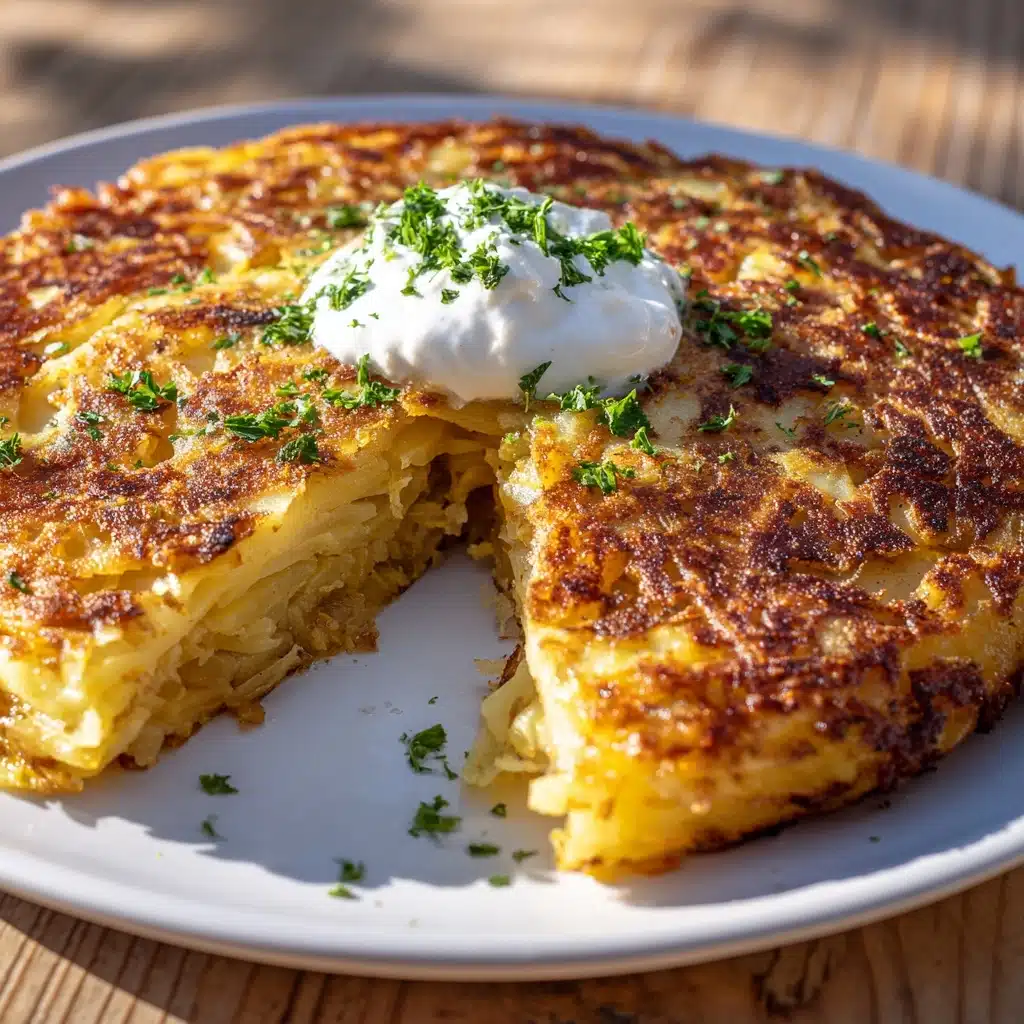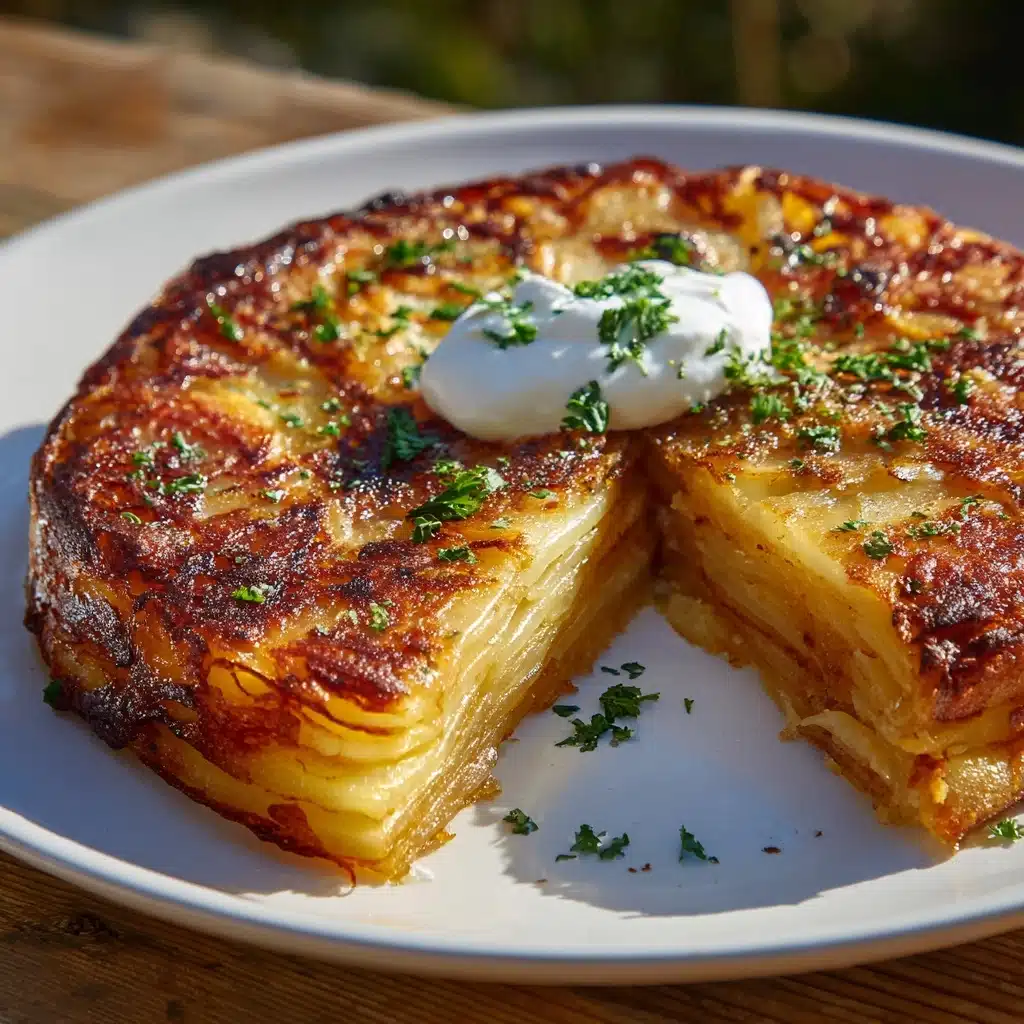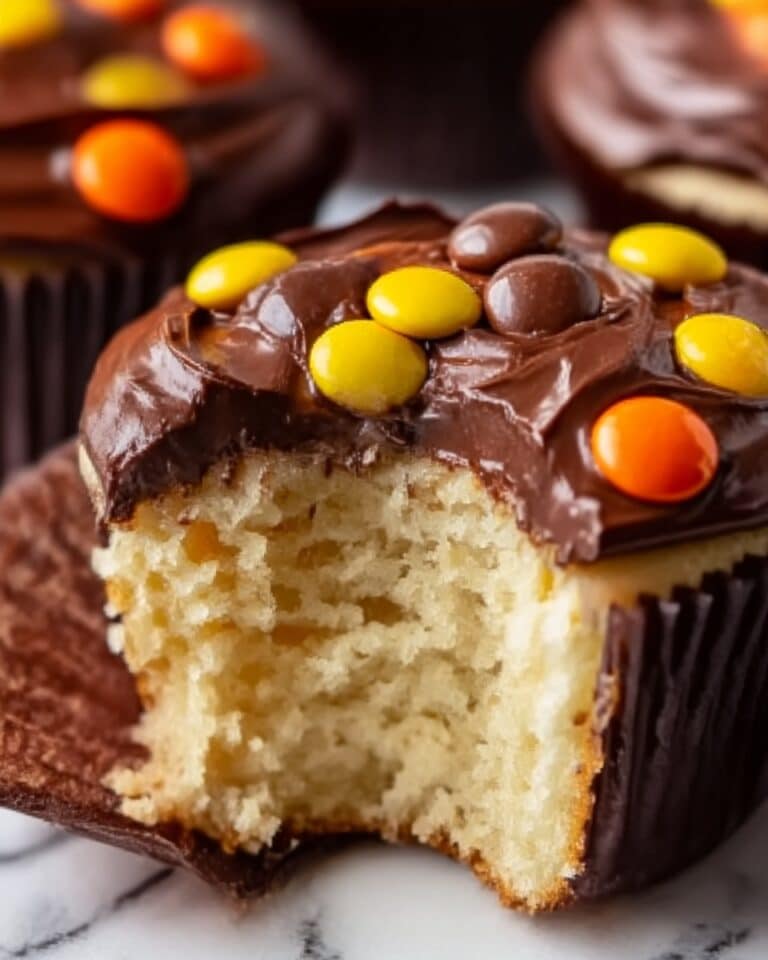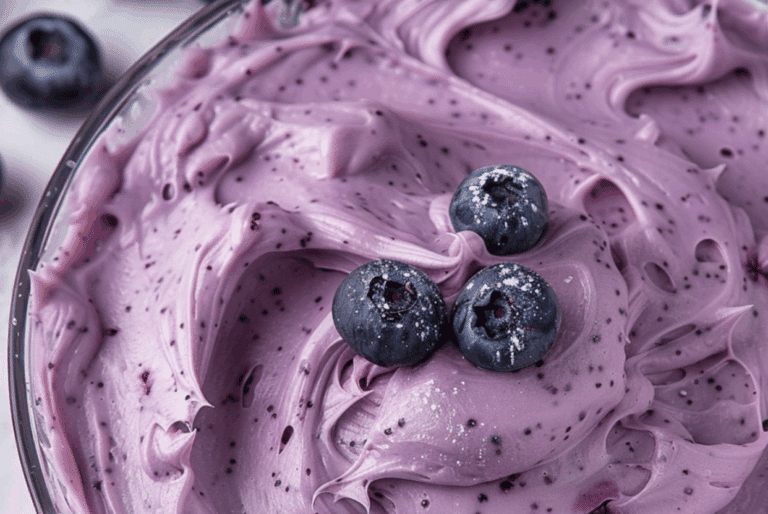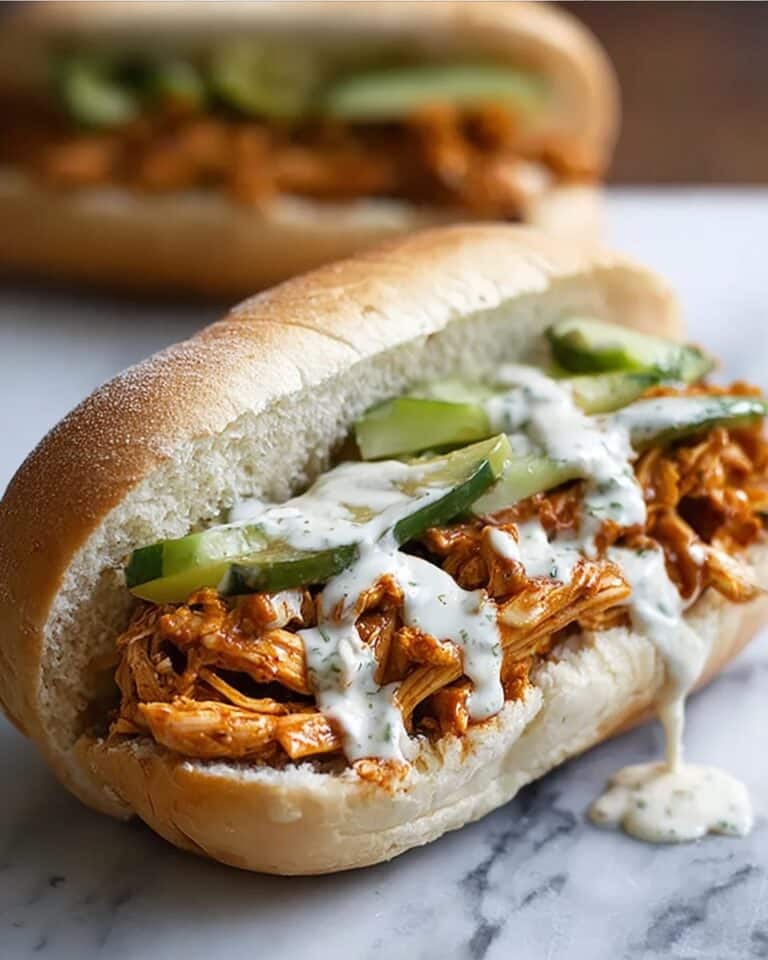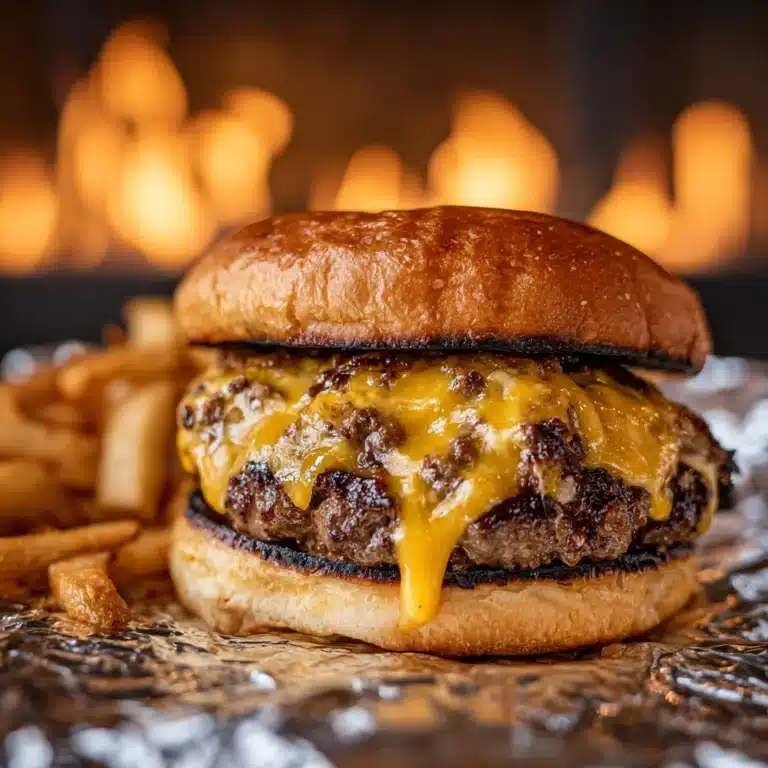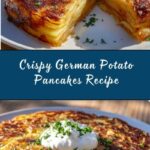If you’re looking for the very best way to bring some old-world comfort to your table, German Potato Pancakes are the answer. These golden, crispy wonders combine tender potatoes and zesty onion into something irresistibly crisp on the outside and satisfying inside. Whether you remember them from family holidays, a favorite brunch spot, or you’re brand-new to Kartoffelpuffer, this iconic dish offers all the joy of simple ingredients transformed into pure magic with just a little frying. Let’s dive into everything you need to know for perfect German Potato Pancakes every time!
Ingredients You’ll Need
The beauty of German Potato Pancakes lies in their simplicity: humble ingredients, each playing a starring role. With just a handful of pantry staples, you’ll unlock comfort food that’s as rich in flavor as it is in tradition.
- Russet potatoes (2 lbs, peeled): High in starch and low in moisture, russets deliver the crunchiest edges and most tender centers.
- Onion (1 small): Adds a mild, savory backdrop and a little punch to every bite.
- Large eggs (2): Help bind the mixture so your pancakes hold together beautifully.
- All-purpose flour (1/4 cup): Just enough to give the pancakes cohesion without making them cakey.
- Salt (1 teaspoon): Crucial for seasoning and bringing out every subtle flavor.
- Black pepper (1/2 teaspoon): For gentle heat and complexity—freshly ground is best here!
- Baking powder (1/4 teaspoon): A small touch for an extra hint of fluffiness inside.
- Vegetable oil (for frying): Choose a neutral oil with a high smoke point for the crispiest possible finish.
- Sour cream or applesauce (for serving): The classic finishing touch—rich, tangy, or sweet as you like it!
How to Make German Potato Pancakes
Step 1: Grate the Potatoes and Onion
Start by peeling your russet potatoes and the onion, then grab your box grater or food processor. Grate the potatoes and onion together, letting the onion’s natural juices mingle with the starches for the perfect flavor base. Don’t rush this step—a fine, even grate is key for the classic texture of German Potato Pancakes.
Step 2: Squeeze Out the Moisture
Place the grated potato and onion mixture into a clean kitchen towel, then roll it up tight and twist. Squeeze out as much liquid as possible—this is essential for crisp, never soggy, pancakes. It might take a little muscle, but the reward is worth it!
Step 3: Mix the Batter
Transfer the drained potatoes and onion to a large bowl. Add your eggs, flour, salt, pepper, and baking powder, then stir it all together until fully combined. The batter should be thick and sticky but still spoonable—if it’s soupy, try squeezing out just a bit more moisture.
Step 4: Fry to Golden Perfection
Heat about 1/4 inch of vegetable oil in a large skillet over medium heat. When the oil shimmers, it’s ready. Scoop heaping spoonfuls of the potato mixture into the pan, then flatten them into thin pancakes with the back of your spoon. Leave space around each one. Fry for 3 to 4 minutes per side until gloriously golden and crisp. Set finished pancakes on a plate lined with paper towels and keep them warm in a low oven while you fry the rest.
Step 5: Serve Hot and Enjoy
Your German Potato Pancakes should be piping hot, irresistibly crisp, and positively begging to be dipped into sour cream or applesauce! Serve right away for the very best texture and flavor.
How to Serve German Potato Pancakes
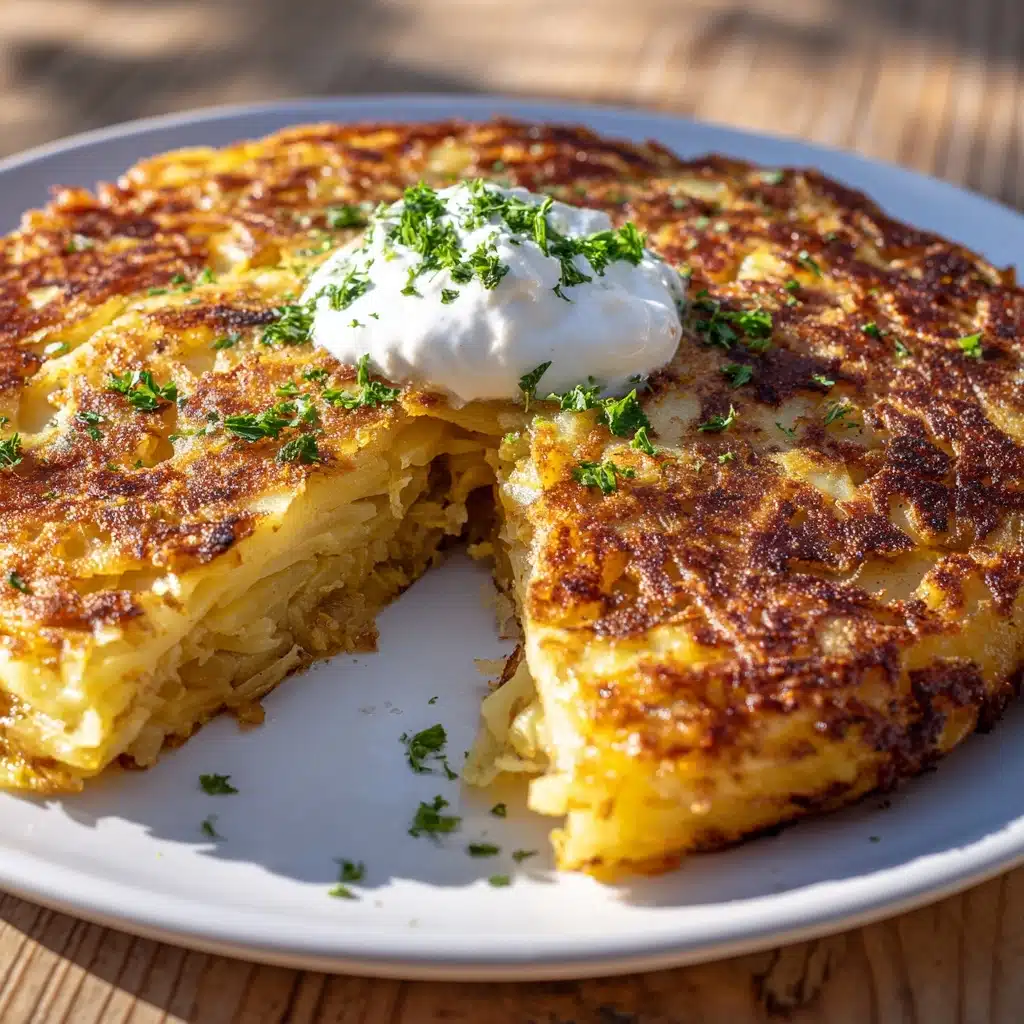
Garnishes
The beauty of German Potato Pancakes is in their simplicity, so your favorite traditional garnishes really shine. A dollop of cool, tangy sour cream or a spoonful of homemade applesauce highlight both savory and sweet sides of this classic. For a little extra flair, a sprinkle of fresh chives or parsley adds color and a hint of freshness.
Side Dishes
Balance the richness of your pancakes by serving them alongside light sides like crisp cucumber salad, simple green salad, or even roasted apples. If you’re aiming for a heartier meal, pair them with bratwurst or smoked salmon. The possibilities are endless, and all roads lead straight to comfort!
Creative Ways to Present
Get playful with your presentation by stacking mini German Potato Pancakes as an appetizer tower, or arranging them in a spiral on a platter for brunch. Top with a fried egg for breakfast, or offer a variety of dipping sauces for a festive crowd-pleaser. However you serve them, they’re guaranteed to disappear fast!
Make Ahead and Storage
Storing Leftovers
If you find yourself with extra German Potato Pancakes (lucky you!), place cooled leftovers in an airtight container. Layering parchment or wax paper between pancakes keeps them from sticking together. Stored this way, they’ll hold up well in the fridge for up to 3 days.
Freezing
To freeze, spread cooled pancakes on a baking sheet and freeze until solid, then transfer to a zip-top bag or container. They’ll keep their flavor for up to 2 months. Simply reheat straight from the freezer for a quick and tasty snack or side anytime.
Reheating
For the crispiest results, reheat German Potato Pancakes in a 375°F oven for 8–10 minutes, either from the fridge or straight from the freezer. Avoid microwaving if possible, as it can make them soggy—these pancakes deserve their crunch!
FAQs
Can I use other types of potatoes for German Potato Pancakes?
While russet potatoes offer the best balance of starch and moisture, you can use Yukon Gold potatoes for a slightly creamier texture. Just be sure to squeeze out as much liquid as possible, whichever type Side Dish.
Do I need to peel the potatoes?
Peeled potatoes give a smoother pancake and the classic look, but if you prefer the rustic texture and nutrition that comes with the skin, feel free to leave it on—just wash them well first!
What’s the best way to shred the potatoes and onion?
A box grater yields perfect, classic texture, but a food processor with a shredding blade will save time (and your knuckles!). If using the food processor, pulse the onions briefly to avoid over-mashing.
How do I keep the pancakes warm while frying the rest?
Keep cooked pancakes on a wire rack set over a baking sheet in a 200°F oven. This keeps them hot and crispy without steaming—so every pancake that hits the table is just as irresistible as the first.
Can I make German Potato Pancakes gluten-free?
Absolutely! Just swap the all-purpose flour for your favorite gluten-free blend or potato starch. The taste and crispiness will be just as wonderful, and everyone can join in the fun.
Final Thoughts
Few recipes bring people together quite like German Potato Pancakes—crispy, golden, and deeply satisfying. Whether it’s your first time making them or you’re perfecting a cherished recipe, you’re in for something truly special. Gather your ingredients and give them a try; you just might discover your new favorite comfort food!
Print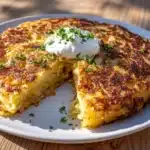
German Potato Pancakes Recipe
- Prep Time: 15 minutes
- Cook Time: 25 minutes
- Total Time: 40 minutes
- Yield: 4 servings
- Category: Side Dish
- Method: Frying
- Cuisine: German
- Diet: Vegetarian
Description
Learn how to make traditional German Potato Pancakes, also known as Kartoffelpuffer, at home with this easy recipe. Crispy on the outside and tender on the inside, these potato pancakes are a delightful side dish or snack. Serve them hot with sour cream or applesauce for a truly authentic experience.
Ingredients
Potato Pancakes:
- 2 lbs russet potatoes (peeled)
- 1 small onion
- 2 large eggs
- 1/4 cup all-purpose flour
- 1 teaspoon salt
- 1/2 teaspoon black pepper
- 1/4 teaspoon baking powder
- vegetable oil for frying
Serving:
- sour cream or applesauce for serving
Instructions
- Grate the Potatoes and Onion: Grate the potatoes and onion, then squeeze out excess moisture using a kitchen towel.
- Mix Ingredients: Combine the grated mixture with eggs, flour, salt, pepper, and baking powder.
- Fry the Pancakes: Heat oil in a skillet, drop spoonfuls of the mixture, flatten into pancakes, and fry until golden brown and crispy.
- Drain and Serve: Drain the pancakes on paper towels and serve hot with sour cream or applesauce.
Notes
- For extra crispiness, ensure the potatoes are well drained.
- To keep pancakes warm, place them in a 200°F oven while finishing the batch.

